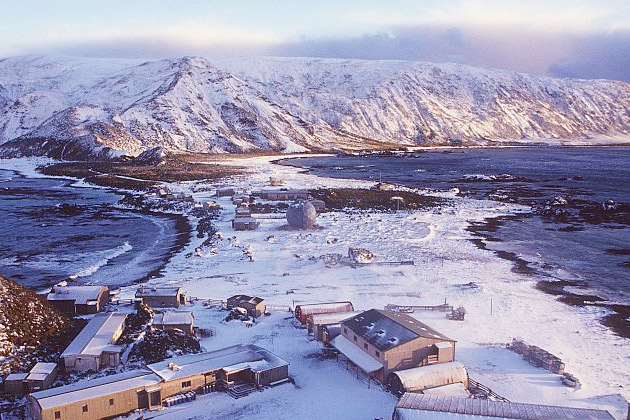Deployments
Range Networks' software is being used by customers on all seven continents. Its underlying technology has also been licensed by several search and rescue operations as well as in mobile medical applications.
St. Pierre and Miquelon
St. Pierre and Miquelon is a self-governing territorial overseas collective of France (COM) situated near Newfoundland, Canada.
The island's incumbent wireless carrier had a monopoly on cellular service and had priced their plans accordingly. An entrepreneur from France applied for wireless spectrum and contacted Range Networks for further guidance.
After an initial deployment of five base stations, his company, GlobalTel, now has seven base stations actively serving a population of 6,000.
San Juan Ñumí, Oaxaca, Mexico
Smartcel, an ISP and VoIP provider from Mexico City, Mexico, contacted Range Networks to bring coverage of the municipality of San Juan Ñumi.
Larger carriers had not built out their networks to cover the area because the population was not large enough to be a profitable investment. This was Smartcel's first cellular network deployment and they are successfully providing coverage to the area's population of 6,000.
Antarctica
Because of the location and extreme conditions, many traditional networks will fail in Antarctica. The installation could not depend on reliable backhaul service and any problems needed to be fixed using only local personnel and equipment. This is where the flexibility of our software-based solution using off-the-shelf hardware shines.
After a test deployment on the Macquarie Island research station, coverage has been expanded to include an additional three labs on Antarctica. Their entire operational area of approximately 150km² is served by four base stations. A roaming research vessel is also integrated into this network that carries its own base station serving over 100 crew members.
This modern solution consisting of six base stations, wired VoIP phones and mobile GSM handsets replaces an outdated VHF paging system and is managed entirely by existing personnel.
Patagonia
In Patagonia Range has established a network to serve a collection of farmers and ranchers to improve their ability to communicate.
Although this is a small-scale network, it has changed the way they handle day-to-day situations and saves many hours of travel.
This network was conceived, deployed and is maintained by a single local entrepreneur.
Papua, Indonesia
In collaboration with the University of California at Berkeley, a new network was deployed to two villages in Papua, Indonesia. After our engineer spent just one day onsite, the network was up and running.
These villages were without any cellular coverage and the nearest town with coverage is a 4-hour drive away. Traditional mobile equipment cannot profitably serve such a small and remote community.
Even electricity was hard to come by in the village but because of the flexibility of the Range Networks' software, a low-power solution was found. A small hydro-generator has provided enough power to keep the network active.
After only two months of operation, the network was profitable. Further profits from the network are being used to help fund a local school.
Southern Zambia
In partnership with the University of California Santa Barbara, a two-tower cellular extension was deployed in rural Zambia to expand coverage of an existing cellular network.
The village is home to over 130,000 people but is spread out over an extremely large area. Many large sections of it are without cellular service.
A water tower and school building were used to mount two new systems running Range Networks' software. Working in tandem they add approximately 35km² of new coverage for the residents. It took just two days to establish this new infrastructure.
Iceland - Search and Rescue
Our software is being used in Iceland as a way to speed up search and rescue missions. A helicopter-mounted base station flies in a pattern over a target area to locate lost hikers, based on a signal from their cell phone.








